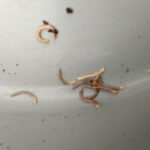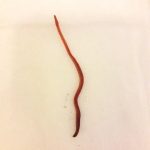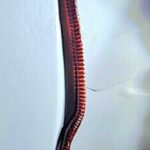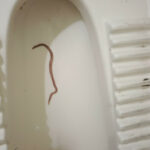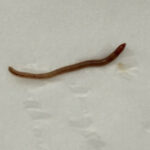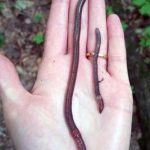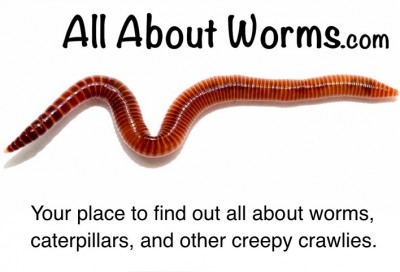
“What is a small brown worm with antennae and definitely no legs?” asks this reader in his query to us. Although he sends no photographs with his submission, he describes the worm as being approximately one-and-a-half inches long and “very skinny.”
The worms, which are characterized by our reader as “energetic and wiggly”, are described as being found “under debris in damp areas.” Our reader has been feeding the worms to a his “small house spider that is much smaller than the worms.” According to him, his spider “initially runs away” at the sight of the worms, “until she senses that she can handle it and then she wraps the wiggling worm up and starts feeding.” If it was not for our reader insisting that these worms “definitely” had no legs, we would say this sounds exactly like a millipede. After all, the most common garden millipede is brown in color, skinny, and prefers damp environments where they can hide under leaves of rocks. With that in mind, people often do not notice the legs on millipedes, especially the smaller species. This is because, unlike centipedes, the legs on millipedes are tucked underneath their bodies, and so often when they walk across a surface, it seems as if the creature is simply gliding over the surface.
Regardless, if our reader insists that this worm does not have legs, then we have to respect that and consider our other options. But, to be frank, there are not a lot of other worm-like creatures with antennae that fit this description, besides a very skinny slug. Other brown worms that like damp areas and are relatively skinny include various species of earthworms (eg: the jumping worms), drain fly larvae (though they are not found under debris), and some species of terrestrial flatworms. That being said, none of these examples have antennae (drain flies do in their pupal form, but not during their larval stage). Out of these options, the most likely contender is the earthworm, and this might very well be what our reader found. Perhaps the antennae are something else in that case?
What we recommend that our reader do upon finding the next similar worm is turn it upside down and look really closely at its underside (with a magnifying glass if he has to!) to see if the worm does indeed have multiple tiny legs, rather than none at all. We ask that he does this because his description really does match that of millipedes the best compared to any other creature, but the defining characteristic of this arthropod is its multitude of legs, something that our reader stated these worms “definitely” did not have. Yet, as we said, many tend to miss the legs on the smaller species of millipedes. It may also be that our reader is finding young millipedes, and so their legs are even harder to spot as they are not mature. This would also explain how our reader’s spider is able to eat the millipedes, as they would normally not be able to eat a fully-grown millipede, mostly due to its exoskeleton protecting it from such attacks.
To conclude, it is unclear what our reader has found. Despite our reader making clear that the worms he has been finding have no legs, the rest of his descriptions fit that of the millipede perfectly. Our bets are on these being millipedes and that our reader simply overlooked the underside of these creatures. Otherwise, they may also be earthworms, but then it would not add up that the worms had antennae. It seems that there is always at least one quality that these worms possess that does not match any given brown, skinny worm. If our reader wishes to, he may send us a picture as that might tie up the loose ends and provide an answer to this mystery. Either way, we hope that this article proves useful to our reader, even if we did not provide any concrete answers.
All About Worms is always free, always reader-supported. Your tips via CashApp, Venmo, or Paypal are appreciated! Receipts will come from ISIPP Publishing.



